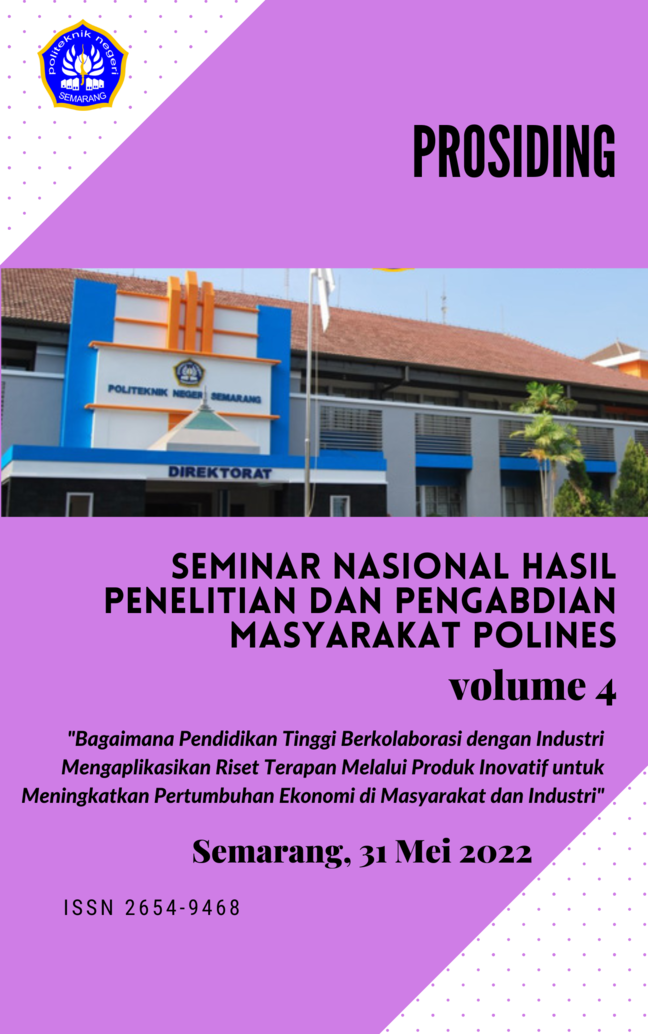PENGEMBANGAN MODEL PEMBELAJARAN E-COMMERCE DALAM MENINGKATKAN MINAT WIRAUSAHA MAHASISWA
Keywords:
e-commerce, learning modelAbstract
E-Commerce has developed very rapidly in Indonesia in recent years. To support this, the E-Commerce course is taught in the Department of Business Administration. The E-Commerce course aims to encourage students of the Department of Business Administration to become self-employed after graduating from college. However, based on the results of the 2019 tracer study report, alumni who open their own businesses only revolve around 10%. Therefore, it is necessary to conduct research to create an appropriate learning model for E-commerce courses so as to support the achievement of increasing student interest in entrepreneurship with e-commerce. The method used in this study begins with a learning approach, determines learning strategies, determines learning methods, implements learning techniques, applies learning tactics and assembles into a learning model. The research conducted shows that Self Directed Learning and Small Group Discussion are the methods most students choose to study material based on theory and understanding, while the Project Based Learning Method is the learning method that is mostly chosen by students to learn practice-based material.
References
Aco, Ambo dan Endang, Hutami Andi, 2013, Analisis Bisnis E-Commerce pada Mahasiswa Universitas Islam Negeri Alauddin Makassar, Fsainstek Uinam
Alavi, M. and D.E. Leidner, Research Commentary: Technology Mediated Learning A Call for Greater Depth and Breadth of Research, Information Systems Research, 2001, 12: 1, pp. I1 10.
Barbian, J. 2002. Blended Works : Here is Proof : Online Learning Magazine. 6(6), 26-30.
Baum, David. 1999. E-Commerce. New Jersey : Oracle Corp.
Basri, Syamsu. 2000. Teaching Speaking. 2000. Jakarta.
Bersin, Josh. 2004. The Blended Bearning Book:Best Practices, Proven Methodologies, and
Lessons Learned. San Francisco: Pfeiffer.
C. T. U. Jhoni Sugiarto, Wismanto, “Efektivitas Pelatihan Entrepreneurship Skill Untuk Meningkatkan Minat Menjadi Entrepreneur,” Prediksi, vol. 4, no. 1, pp. 51”“60, 2015.
Cord. 2001. Contextual Learning Resource. http://www.cord.org. Diakses 3 Maret 2020.
D. Y. Reni Wijaya, “Persepsi Mahasiswa Terhadap Pemanfaatan E Commerce,” Tekhnologi Inf. Pendidik., vol. 8, pp. 103”“108, 2015.
E. Aprilianty, “Pengaruh Kepribadian Wirausaha, Pengetahuan Kewirausahaan, Dan Lingkungan Terhadap Minat Berwirausaha Siswa SMK,” Pendidik. Vokasi, vol. 2, no. 3, pp. 311”“324, 2012.
Edwards, L.J. and Muir, E.J., 2005. Promoting Entrepreneurship at the University of Glamorgan through Formal and Informal Learning. Journal of Small Business and Enterprise Development; 12, 4; ABI/INFORM Global
Jill Hadfield. 1986. Classroom Dynamic. Oxford University Press.
Johnson E.B. 2002. Contextual Teaching & Learning, What it is and why it”™s here to stay. California: Corwin Press, Inc. Johnson E.B. 2007. Contextual Teaching & Learning Menjadikan Kegiatan Belajar-Mengajar Mengasyikkan dan Bermakna. Bandung: Mizan Learning Center (MLC).
Joyce Bruce, Wel Marsha, Calhoun Emily. 2009. Model-Model Pengajaran Edisi Kedelapan. Jakarta : Pustaka Pelajar.
Laudon, Kenneth C. And Laudon, Jane P. 1998. Management Information Systems: New Approaches to Organization & Technology, Prentice Hall International.
Lie. 1993. Strategi Model Pembelajaran Jigsaw. Bandung:Alfabeta.
M. Ginting and E. Yuliawan, “Analisis Faktor-Faktor Yang Mempengaruhi Minat Berwirausaha Mahasiswa ( Studi Kasus Pada Stmik Mikroskil Medan ),” Wacana, vol. 15, no. 12”“18, pp. 61”“69, 2012.
Nurhadi. 2002. Pendekatan kontekstual, Jakarta : Departemen Pendidikan Nasional, Dirjendikdasmen.
N. Walipah, “Faktor - faktor Yang Mempengaruhi Niat Berwirausaha Mahaisiwa,” JEM, vol. 3, pp. 138”“144, 2016.
O'Neill, William F. 1981.Educational ideologies: Contemporary expressions of educational philosophy.Goodyear Pub. Co.
Piccoli, G., R. Ahmadand B. Ives, "Web-Based Virtual Learning Environments: A Research Framework and a Preliminary Assessment of Effectiveness in Basic IT Skills Training," MIS Quarterly, 2001, 25: 4, pp. I401-426.
Prabowo. 2000. Pembelajaran Fisika dengan Pendekatan Terpadu dalam Menghadapi Perkembangan IPTEK Milenium III . UNESA 2000.
Purnomo, Heru dan Haryanto, Niat Adopsi E-Commercewirausahawan Mahasiswa (Studi Pada Mahasiswa UNS), Jurnal Ekonomi dan Kewirausahaan Vol. 11, No. 1, April 2011 : 32 ”“ 3
Ranganathan, S., S. Negash and M.V. Wilcox, "Hybrid Learning: Balancing Face-to-Face and Online Class Sessions," Proceedings of the Tenth Annual Conference of the. Southern Association for Information Systems Jacksonvill, Florida, 2007.
Rusman. 2010. Model-Model Pembelajaran. Bandung: Mulis Mandiri Pers.
Sauers, D. and R.C. Walker, "A Comparison of Traditional and Technology-Assisted Instructional Methods in the Business Communication Classroom," Business Communication Quarterly, 2004, 67: 4, pp. I430-442.
Slavin, R. E. 2005. Cooperative Learning, Teori Riset dan Praktik (Indonesian Version). (N. Yusron, Trans.) Bandung: Nusa Media.
S. M. Uldi Pristiana, Amiartuti Kusumaningtyas, “Faktor-Faktor Yang Mempengaruhi Pengambilan Keputusan Wanita Berwirausaha Di Kota Surabaya,” J. Pendidik dan Pendidik., vol. 20, no. 1, pp. 81”“95, 2005.
S. S. Kadarsih, Susilianingsih, “Faktor- faktor Yang Mempengaruhi Minat Berwirausaha Pada Mahasiswa Program Studi Pendidikan Ekonomi FKIP UNS,” Jupe UNS, vol. 2, no. 1, pp. 95”“106, 2013.
Sumardi Kamin. 2015. Pengembangan Model-Model Pembelajaran. Universitas Pendidikan Indonesia, Bandung.
Thomas, J.W., Margendoller, J.R., & Michaelson, A. 1999. Project-Based Learning: A. Handbook for Middle and High School Teachers.
Wahana komputer Semarang. 2002. Apa dan Bagaimana E-Commerce, Andi Yogyakarta






